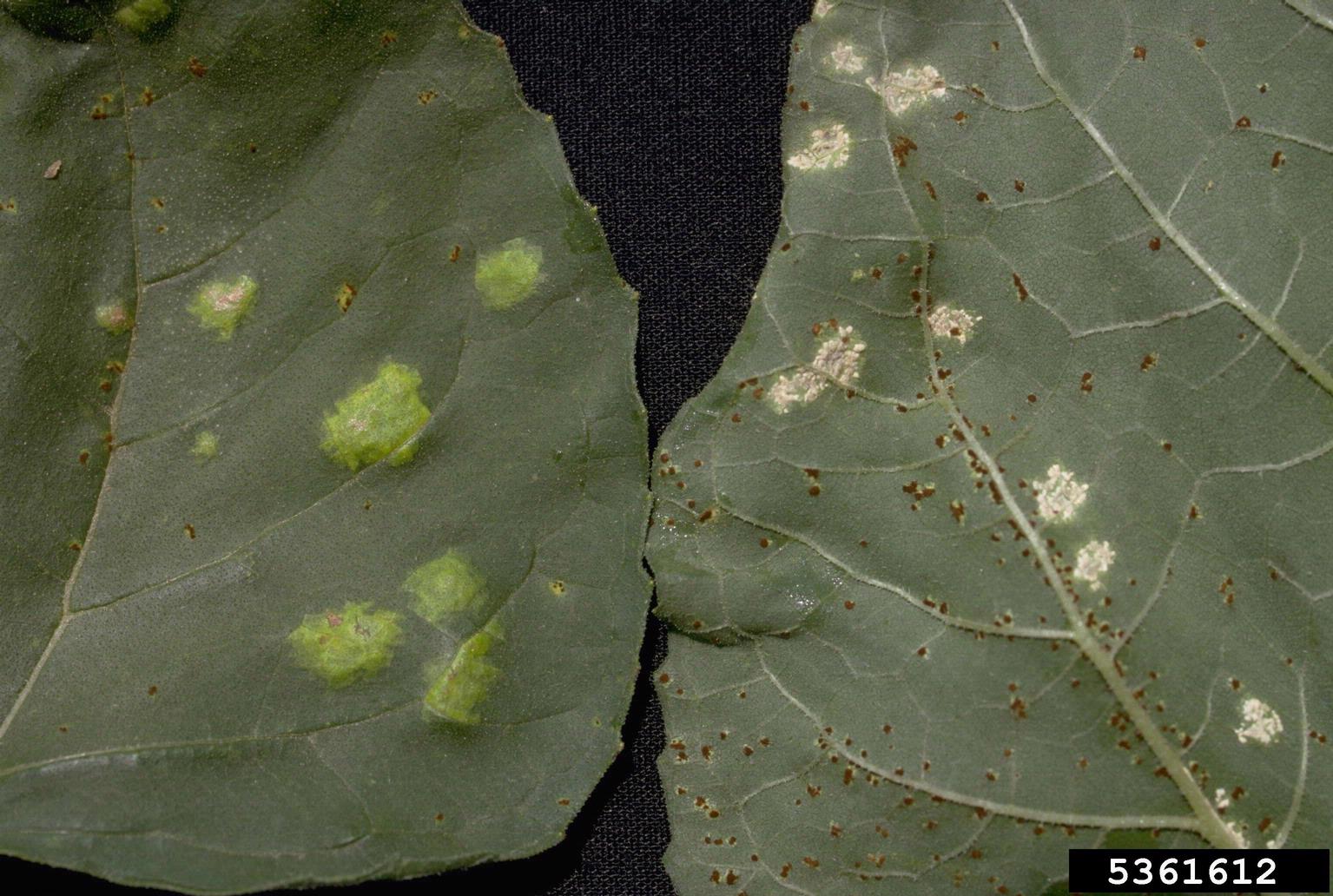White Rust Disease - Controlling White Rust Fungus In The Garden


Also called Staghead or white blister, white rust disease affects cruciferous plants. These plants are all members of the cabbage family (Brassicaceae) and include such vegetables as broccoli, cauliflower, Brussels sprouts, and kale and can ruin your crop.
White Rust Disease - What is White Rust?
What is white rust? It's a disease that causes distinctive, chalky white spore masses sometimes referred to as pustules that first show up on the underside of leaves. These blister-like masses, called sori, form under the leaf's dermis (skin) and can't be scraped off without damaging the leaf. The stem and leaves can become twisted and deformed. White rust disease can and will infect the floral parts as well. Broccoli and cauliflower, in particular, will produce grossly deformed heads and for those gardeners who collect seeds for the following year's planting, those seeds will be sterile. White rust is one of several species of the fungus Albugo. It commonly occurs when nights are cool and damp, and days are warm. The perfect time for growing cruciferous vegetables also provides the perfect growing conditions for Albugo. Controlling white rust fungus would be easy if we could control those spring and fall temperatures since it flourishes between 57 and 68 degrees F. (14-20 C.). Unfortunately, we can't control temperature any more than we can control the spring rains or the dewy mornings this fungus adores.
White Rust Treatment
If your garden has been plagued by white rust disease in the past, you should look for resistant strains in the future. There are no fungicides specific to white rust treatment and once the disease becomes rampant, there is little to be done. That being said, fungicides used to treat downy mildew are sometimes effective against white rust, particularly leafier crops. Treatment must begin at the first signs of infection. The methods for controlling white rust fungus or how to prevent white rust are largely organic. The control of white rust fungus depends on the understanding of the life cycle of fungi in general. Fungi reproduce by producing spores; tiny, microscopic cells, each of which is capable of becoming a fungus and thus establishing a new colony-- what we see on the leaf or stem. Due to their minuscule size, these spores are carried easily from plant to plant or garden to garden, by wind or water. Since there is a protective coating, many of these spores can lay dormant for long periods of time, surviving in both cold and arid conditions. When conditions are right again, they ‘blossom.' The secret to how to prevent white rust is two-fold. First is the removal of the places where the spores hide. Garden debris should never be left to overwinter. Even plant growth that looks healthy may be harboring spores waiting to spread the disease the following spring. Obviously infected debris should be disposed of away from the garden area. As it is almost impossible to collect and destroy every scrap of debris, consider tilling it under as another form of white rust treatment. While tilling won't destroy the spores, it can prevent them from being exposed to the growing conditions they require. The second step in controlling white rust fungus is crop rotation. Infected beds should not be replanted with cruciferous vegetables for at least three years. Remember, good garden housekeeping is essential in controlling white rust fungus as well as many other garden diseases, therefore, it should be a regular part of your gardening calendar. That old adage remains true: an ounce of prevention is worth a pound of cure.
Gardening tips, videos, info and more delivered right to your inbox!
Sign up for the Gardening Know How newsletter today and receive a free copy of our e-book "How to Grow Delicious Tomatoes".

Jackie Rhoades began writing for Gardening Know How in 2010.
-
 Looking For Plants To Give You The Soft And Fuzzies? Try These 5 Fuzzy Leaf Plant Options
Looking For Plants To Give You The Soft And Fuzzies? Try These 5 Fuzzy Leaf Plant OptionsLovers of texture, drama, silver foliage and tactile plants will adore these special sensory garden additions. These fuzzy leaf plant options will leave you all aglow
By Susan Albert
-
 Get Ready For A Summer Of Hummers! Grow These Full Sun Hummingbird Plants and Flowers
Get Ready For A Summer Of Hummers! Grow These Full Sun Hummingbird Plants and FlowersIf you’re lucky enough to enjoy a sunny backyard, make sure you are maxing out on your pollinator opportunities and grow these full sun hummingbird plants and flowers
By Tonya Barnett